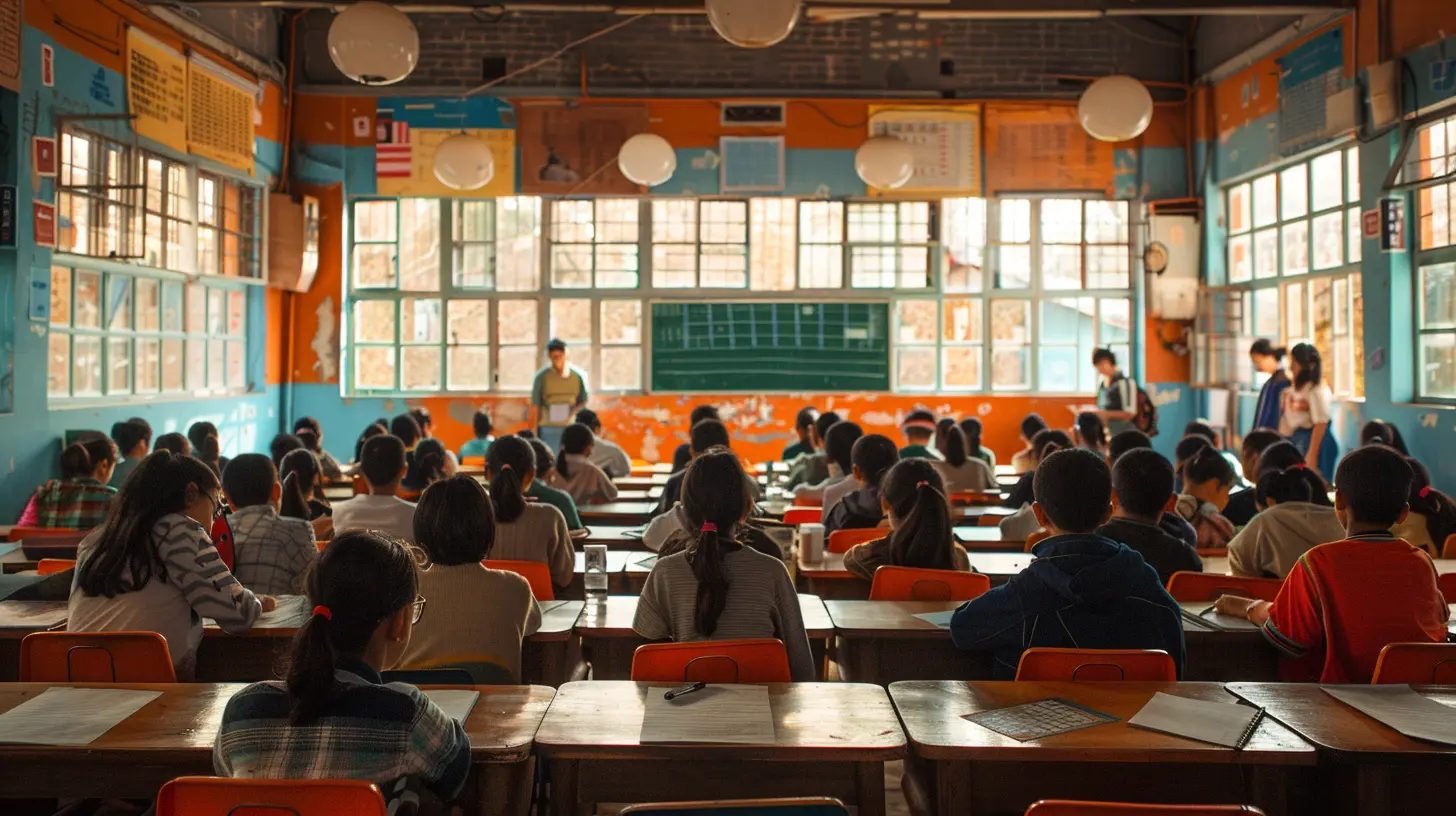The Global Perspective: How Standardized Testing Varies Around the World
26 August 2025
Standardized testing — love it or hate it, it plays a major role in education systems around the globe. If you've ever filled in rows of little bubbles, sat for hours in a test hall, or felt the pressure of a make-or-break exam, then you know just how impactful these tests can be.
But here's the thing: standardized testing isn't one-size-fits-all. In fact, it changes shape, purpose, and pressure from country to country like a chameleon on a rainbow. So, let’s take a little trip around the world and see how students in different countries are tested, graded, and pushed — and what all of it says about their education cultures.
What Is Standardized Testing, Really?
Before we go globe-trotting, let’s get on the same page. Standardized tests are exams that are administered and scored in a consistent way — same questions, same scoring system, same time limits. The idea is to provide an objective measure of student performance. Sounds fair, right?Well, fair in theory. In practice, the way these tests are used — and what’s at stake — varies a lot.
Why Do Countries Use Standardized Testing?
Ask ten education ministers why we need standardized testing, and you’ll probably get ten different answers:- To measure academic progress
- To decide who gets into university
- To hold teachers and schools accountable
- To compare students internationally
- To allocate funding
The purpose behind the test often shapes how it’s designed and how students experience it. Let's dive deeper into how this plays out across different parts of the world.
United States: Testing as a Yardstick
If there’s one country where standardized testing is deeply embedded in the education system, it’s the United States. From elementary school through high school, American students face a slew of tests — think SAT, ACT, AP exams, state assessments, and more.What's the goal here?
In the U.S., testing is used for both accountability and college admissions. Schools are often judged based on students’ test scores, and federal funding can even depend on them. That means there’s a lot of pressure — on students, yes, but also on teachers and administrators.
How do students feel?
Stressed, mostly. Critics argue it leads to a "teach-to-the-test" mentality, reducing creativity and critical thinking in the classroom.
Finland: No Tests, No Stress?
Swing across the Atlantic to Finland, and you'll find one of the world’s most admired education systems — with barely any standardized testing.Wait, seriously?
Yep. Finnish students don’t take big national exams until the end of high school. Instead, continuous assessment by teachers is the name of the game. The only major test, the Matriculation Examination, is taken when students finish upper secondary school.
So what’s Finland doing right?
By focusing on equality, trust in teachers, and student well-being, Finland has consistently ranked high in global education rankings like PISA — and all without the testing grind.
China: The High-Stakes Gaokao
Now let’s travel to China, where the Gaokao — the National College Entrance Examination — is practically an institution. This test determines whether a student gets into a good university, and by extension, shapes their entire future.How intense is it?
Picture this: students study for years, sometimes 12 hours a day, all leading up to this one test. Families move homes to be closer to good schools. Entire cities go quiet on test day. It’s serious business.
But is it effective?
It’s extremely competitive and arguably puts too much pressure on young people. Still, it creates a merit-based system in a country with over a billion people — no easy feat.
United Kingdom: Sorting Students Early
In the UK, standardized tests start showing up pretty early in a child's life — like the SATs taken in primary school. Then there’s a big focus on the GCSEs at age 16 and A-levels two years later, which are crucial for university admissions.Why so many tests so early?
The British system emphasizes specialization from a young age. A-levels are subject-specific, so students begin narrowing their focus as teens. Testing helps organize this funneling process.
The downside?
Many argue it limits interdisciplinary learning and puts young students under unnecessary pressure long before they're fully developed.
Japan and South Korea: Culture of Cramming
Head over to East Asia, and you’ll find educational cultures where testing is king — especially in Japan and South Korea.What’s it like in Japan?
Students prepare for entrance exams to get into high school and again for university. Cram schools, known as juku, are popular, and late-night studying is the norm.
And in South Korea?
The Suneung, or College Scholastic Ability Test, is a national event. Flights are grounded during the listening section to reduce noise. Families pray at temples the night before. It’s that serious.
What’s the impact?
While these countries often top global rankings, critics say the system places an unhealthy burden on students and promotes rote memorization over creativity.
Germany: Testing Meets Tracking
Germany takes a different approach altogether. Instead of a system dominated by one massive test, students are tracked into different school types after elementary school: Gymnasium for academic tracks, Realschule for vocational paths, and so on.Is this based on testing?
Partially. Teachers recommend tracks based on academic performance, and some states do require exams. But social and parental input also plays a role.
Pros and cons?
Early tracking can tailor education more effectively, but it has also raised questions about social equality and whether students are being pigeonholed too soon.
India: The Rote Race
India’s education system is no stranger to exams. Students face boards like the CBSE and ICSE, and those aiming for professional schools take entrance tests like JEE (for engineering) and NEET (for medicine).How does it work?
High schoolers often juggle school exams and private tutoring for competitive tests, sometimes attending "coaching centers" that run like factories.
What’s the challenge?
While the system identifies top talent, it also encourages rote learning and puts massive pressure on students, especially in urban middle-class families.
France: The Baccalauréat Grind
In France, everything builds up to the Baccalauréat, or “le bac.” It’s a rigorous exam that students must pass to graduate and enter university.What’s unique about it?
This isn’t a multiple-choice marathon. The bac includes written essays, oral exams, and subject-specific knowledge. It’s long, complex, and seen as a real intellectual challenge.
Is it too much?
Some think so. Reforms have tried to make the bac more flexible, but it remains a defining moment in a French student’s life.
Africa: A Mixed Landscape
Across Africa, the diversity is immense. Some countries follow systems inherited from colonial powers. For example, Kenya and Nigeria follow models similar to the British system, with high-stakes national exams at various stages.What's working?
In many places, exams are crucial for upward mobility. They allow students from rural or under-resourced areas to stand out.
What’s the struggle?
Access to quality education is uneven, and heavy reliance on exams can amplify inequities rather than bridge them.
International Tests: The Global Classroom
Beyond national borders, there are tests like PISA (Programme for International Student Assessment) and TIMSS (Trends in International Mathematics and Science Study) that compare student performance globally.Why do these matter?
They help policymakers see what’s working and what’s not. But comparing different cultures and systems using a single test? That’s like comparing apples to sushi.
Is There a Perfect System?
Short answer? No. Every country tailors its education system — tests and all — to its own history, culture, and goals. Some systems emphasize equity, others prioritize meritocracy. Some value creativity, others focus on efficiency.So, what’s the takeaway?
Standardized testing is a tool, not a villain or a savior. Like any tool, its value depends on how, why, and where it’s used.
The Future of Testing: What’s Next?
With rising mental health concerns, AI-driven teaching tools, and new ways of measuring learning, the future of standardized tests might be less about pencils and papers — and more about adaptability.Will we still have big exams?
Probably. But expect more nuanced assessments, portfolio-based evaluations, and tech-driven alternatives to emerge, especially in progressive education systems.
Final Thoughts
Standardized testing might be global, but how it’s done varies wildly — from stress-filled battlegrounds to laid-back check-ins. What’s clear is that a one-size-fits-all system doesn’t exist. The real challenge lies in balancing fairness, rigor, and well-being.Let’s hope the future holds a system that measures potential without crushing it.
all images in this post were generated using AI tools
Category:
Standardized TestingAuthor:

Eva Barker
Discussion
rate this article
1 comments
Etta McDonald
Great insights! It's fascinating to see how different cultures approach standardized testing. Thanks for sharing this perspective!
September 14, 2025 at 4:32 AM

Eva Barker
Thank you! I'm glad you found the insights valuable. It's incredible to see how culture shapes educational practices!


